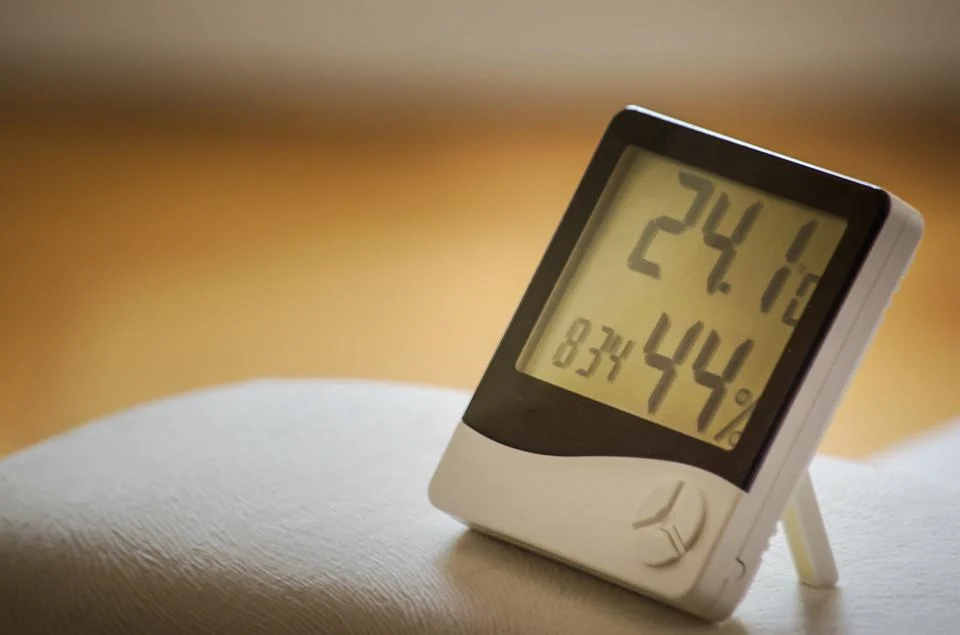A lot of homeowners wonder what the best humidity level is in their house during winter. In some climates, the humidity level needs to be lowered to prevent damage to your home and belongings. In other climates, the humidity level needs to be raised to prevent illness.
During winter, it’s important that you maintain a comfortable humidity level in your home. However, what is the right level of humidity in the house in winter? And how can you achieve it?
Before diving in, if you’d like to learn about how to set your humidifier in the winter and summer, you can take a look at the following article from the experts at Clover Services.
What is humidity and why is it important to maintain the right level of humidity in the house in winter?
Humidity in a house in winter is the amount of water vapor present in the air. Humidity is important to maintain the right level in your home during winter because it can impact your health, comfort, and home.
You may be asking yourself questions like, “what is the best level of humidity in the house in winter?”, and unfortunately, this is a difficult question to answer.
High humidity can lead to mold and mildew growth, which can cause respiratory problems. It can also cause wood to warp and crack the paint.
Low humidity can cause static electricity and dry out your skin and sinuses. The ideal humidity level for your home ranges from 30% to 50%. You can measure humidity with a hygrometer. There are also a handful of products that can help you maintain the right humidity level in your home, such as dehumidifiers and humidifiers
Taking steps to maintain the right humidity level in your home during winter will help you stay comfortable and healthy all season long.
How to measure house humidity in winter months
Humidity in your house during winter is important because it helps to regulate the amount of moisture in the air. If the humidity levels aren’t high enough, it can cause the air to become dry, which can lead to static electricity and an increased risk of respiratory infections.
On the other hand, if the humidity is too high, it can create an environment that is conducive to mold growth. As a result, it is important to maintain the right level of humidity in your home during winter.
The most effective way that you can do this is by investing in a humidifier, which will help to add moisture to the air and prevent the air from becoming too dry. Additionally, you can also take steps to reduce the amount of humidity in your home by using exhaust fans in kitchens or bathrooms and running a dehumidifier in high-humidity areas.
By taking these steps, you can help to ensure that your home is safe and comfortable during winter.
What are the best ways to decrease or increase the humidity level in your house?
You may not think about humidity much, but the relative humidity in your home can have a big impact on your health, comfort, and even your wallet. humidity that’s too low can cause static electricity, drying out of mucous membranes, and cracking of wood floors and furniture.
On the other hand, humidity that’s too high can lead to condensation on surfaces, mold growth, and musty odors. The ideal relative humidity level for most homes is between 30 and 50%. Here are some easy ways to increase or decrease humidity levels in your house:
To increase humidity levels:
- Place a bowl of water on top of your radiator.
- Hang wet towels or clothes up to dry inside the house.
- Leave the bathroom door open after showering.
- Boil water on the stovetop.
- Grow houseplants.
- Invest in a humidifier.
To decrease humidity levels:
- Turn on an exhaust fan while showering or cooking meals.
- Vent clothes dryers to the outside.
- Cover crawl spaces with plastic sheeting
Tips for staying healthy and comfortable during winter despite changes in humidity levels
Winter can be a tough time of year for our bodies, as we try to adjust to the colder, drier air both outdoors and in our homes.
Seasonal changes in humidity levels can cause a host of uncomfortable symptoms, from dry skin and sinuses to static electricity shocks. Fortunately, there are a handful of things we can do to help our bodies adjust and stay comfortable during winter.
Here are a few tips:
Use a humidifier indoors: This will help to add moisture to the air and prevent your skin and sinuses from drying out.
Drink a lot of fluids: This will help to keep your mucous membranes moist and prevent them from drying out.
Limit your time in hot showers and baths: While they may feel good, hot showers and baths will actually strip your skin of its natural oils, leading to dryness. Instead, take shorter, cooler showers.
Protect your skin: Wear gloves when you go outside, and apply lotion regularly to keep your skin hydrated.
Eat foods that contain omega-3 fatty acids: These fatty acids help to promote healthy skin and prevent dryness. Some examples of common foods that contain omega-3 fatty acids are:
- Flaxseed
- Salmon
- Walnuts
So, what should the humidity be in the house in winter? The answer depends on your climate and personal preferences, but it’s important to find a level that is comfortable for you and helps reduce the occurrence of indoor air quality problems.
By following the tips in this blog post, you can create a healthy environment for you and your family all winter long.

